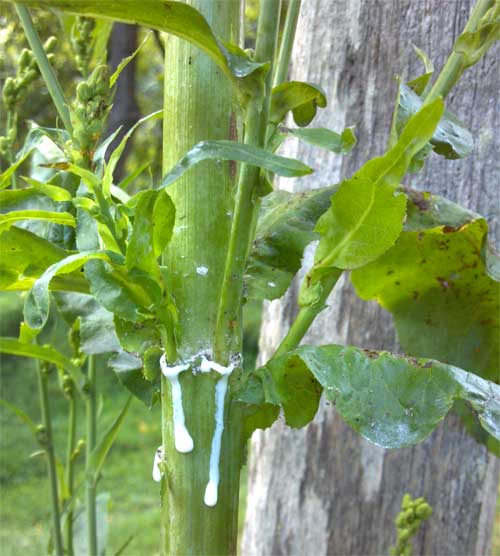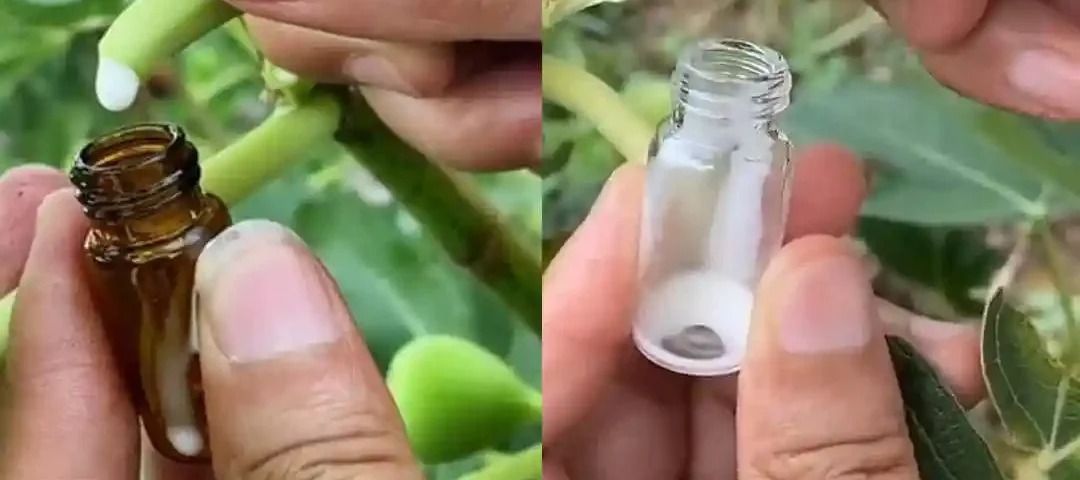Fig sap, often called “fig milk” due to its milky appearance, has been valued for its various practical applications for centuries. The sap, collected from the fig tree (Ficus spp.), is not only an interesting part of the tree but also a versatile substance used in traditional remedies, gardening, and culinary applications. This guide provides a step-by-step process on how to safely collect and utilize fig sap, while emphasizing sustainable practices and health considerations.
What You Need to Know Before Collecting Fig Sap
Before embarking on the collection of fig sap, it’s crucial to understand several important factors related to safety, timing, and the well-being of the tree.
Safety Precautions
Fig sap contains latex, which can be irritating to the skin and eyes. It’s essential to handle the sap with caution to avoid any potential allergic reactions or irritation. For this reason, always wear gloves and protective eyewear when working with fig sap. In addition, latex exposure may cause skin rashes in sensitive individuals, so proper care should be taken to minimize contact.

Optimal Time for Collection
The best time to collect fig sap is typically during the late spring through early autumn when the fig tree is in its active growing phase. During this period, the sap flow is more abundant, making it easier to collect. Avoid collecting sap in the winter when the tree is dormant, as sap production is minimal.
Tree Health Considerations
When collecting sap, it’s important to ensure that you are only tapping healthy, mature fig trees. Harvesting from young or weakened trees can harm the tree and potentially stunt its growth. Ensuring the health of the tree is crucial for both its long-term viability and the quality of the sap.

Tools and Materials Needed
To collect fig sap safely and effectively, you will need the following materials:
- Gardening Gloves: To protect your hands from latex exposure.
- Protective Eyewear: To shield your eyes from any accidental splashes of sap.
- Sharp Knife or Small Cutting Tool: To make a clean incision in the tree.
- Collection Container: A glass jar, plastic bowl, or another suitable container to catch the sap.

Step-by-Step Guide to Collecting Fig Sap
Once you have gathered the necessary tools, follow these steps for safe and effective collection:
1. Prepare Your Tools
Ensure that all tools are clean and sharp. A clean cut will be less harmful to the tree and allow the sap to flow more freely. It’s best to sterilize any cutting tools before use to prevent infections or contamination.
2. Select the Right Spot
Choose a healthy, mature tree that is not damaged. Look for a spot on the tree’s trunk or a branch that is easily accessible. Avoid areas that show signs of disease, decay, or previous injury.
3. Make a Small Incision
Using the sharp knife, make a shallow, small incision in the tree’s bark. The cut should only be a few inches long to minimize damage to the tree. The goal is to allow sap to flow out naturally without harming the tree. Be careful not to overcut, as deep or large incisions can hurt the tree and impair its ability to heal.
4. Gather the Sap
Place your collection container underneath the incision to collect the sap. Depending on the tree and the time of year, sap flow may be slow, and you may need to leave the container in place for several hours to gather an adequate amount.
5. Seal the Cut
Once you have collected the sap, it’s important to seal the incision to protect the tree. You can use a natural tree sealant, or in a pinch, apply mud or clay to cover the cut. This helps prevent infections and ensures the tree continues to heal properly.

Uses of Fig Sap
Fig sap has a long history of use in various cultures, both for medicinal and practical purposes. While the sap is not a common household remedy in all regions, it has gained attention for its wide range of potential applications.
1. Natural Remedy for Skin Issues
Diluted fig sap has traditionally been used to soothe skin irritations such as rashes, minor burns, or warts. The latex in the sap contains compounds that are thought to have mild antimicrobial and anti-inflammatory properties. It is important to perform a patch test before using fig sap topically to ensure that no allergic reactions occur. For external use, it should be applied in small amounts and diluted.
2. Culinary Applications
When processed correctly, fig sap can be used in food production. In particular, it can serve as a coagulant for making dairy-free cheese. This use stems from fig sap’s ability to curdle milk, a trait that has made it valuable in some traditional cheese-making processes. However, due to its potent properties, fig sap should be used cautiously in the kitchen, and individuals should always follow trusted recipes or guidelines.
3. Gardening Aid
Fig sap can also be used in gardening. It has been suggested that fig sap can act as a natural deterrent for certain pests. Applying a diluted solution of fig sap to plants can help keep pests away, though more research is needed to understand its effectiveness fully. Additionally, fig sap can be used as a homemade fertilizer in small quantities, as it may contain beneficial nutrients for plants.

How to Use Fig Sap Safely
Here are several ways to use fig sap, depending on its intended purpose. For each method, it is important to follow safety guidelines and use the sap in moderation.
1. As a Tincture
One of the most common ways to use fig sap is by making a tincture. To do this, mix dried fig sap with a neutral alcohol like vodka or brandy. Let it sit for 2-4 weeks in a sealed jar, shaking it occasionally. Once the mixture has steeped, strain out the sap and store the tincture in a dropper bottle. A small dose of this tincture can be taken for its calming or mild analgesic effects, but it’s essential to consult with a healthcare professional before use.
2. As a Tea (Using Fig Leaves)
While the sap itself is potent, fig leaves can also be used in tea to reap the benefits of fig trees. Steep 1-2 teaspoons of dried fig leaves in hot water for 10-15 minutes. Drinking this tea before bedtime may promote relaxation and help with sleep.
3. External Application (For Skin Soothing)
If using fig sap topically, always dilute it with a carrier oil like coconut or olive oil to reduce its potency. Apply a small amount to the affected area, ensuring there is no allergic reaction. This method is often used for minor skin irritations, but care should be taken to avoid sensitive areas.

Important Safety Considerations
Before using fig sap, keep in mind these important safety tips:
- Perform a Patch Test: Always test the sap or tincture on a small area of skin to ensure no allergic reaction occurs.
- Consult a Professional: If you are unsure about the proper usage of fig sap, it is advisable to consult a healthcare professional, especially if you are pregnant, nursing, or have pre-existing conditions.
- Moderation is Key: Excessive use of fig sap may lead to nausea or dizziness, so it is important to use it sparingly and gradually increase dosage if necessary.
Conclusion: A Natural Resource with Caution
Fig sap is a powerful natural remedy with a variety of uses, from medicinal applications to gardening. However, it should be handled with care, and its potency must be respected. Always prioritize safety, and consult with a professional before using fig sap, particularly for medicinal purposes. By following the steps outlined in this guide, you can harness the benefits of fig sap while minimizing any potential risks.
Sources:
- National Center for Complementary and Integrative Health
- Mayo Clinic – Herbal Remedies
- WebMD – Health Benefits of Figs
- Royal Horticultural Society – Fig Growing Tips
